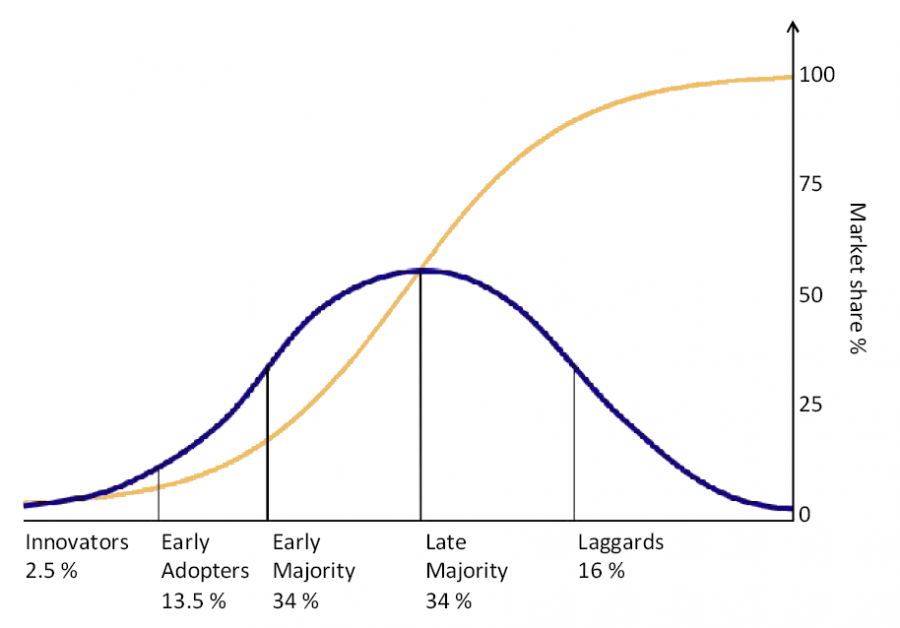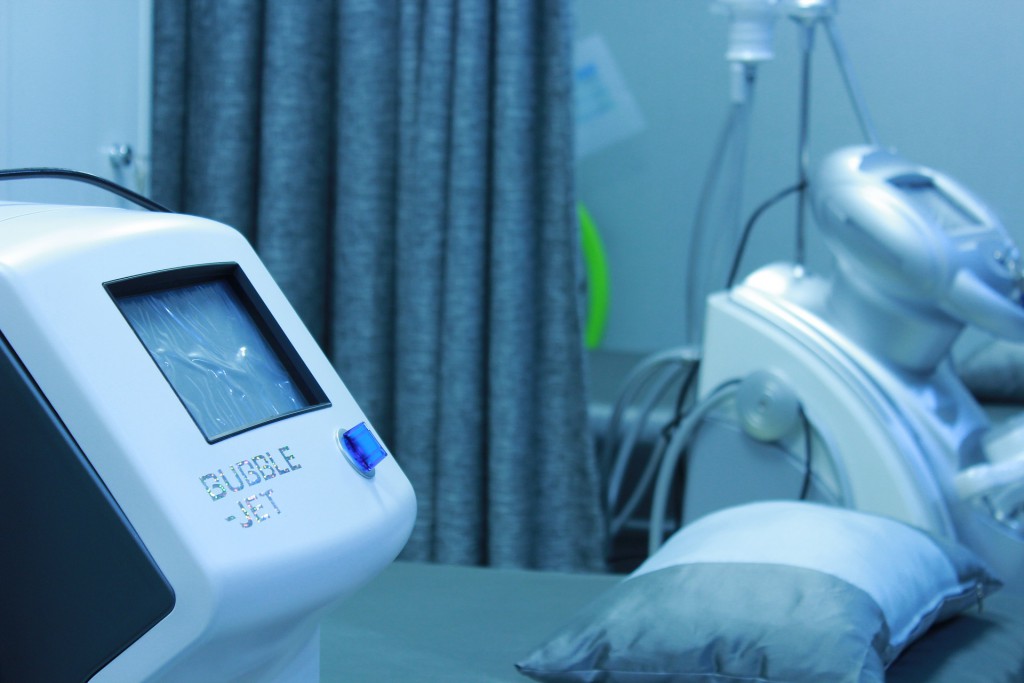Digital technology and telecommunications have transformed (and continue to transform) every aspect of how we live our lives.
With our smartphones in hand, we can order food (or just buy it online), get it delivered (or Uber to pick it up), all while staying at a stranger’s apartment we found on Airbnb and paid for with Apple Pay.
To say that the digital transformation of the consumer ecosystem is nearly complete is, at this point, more a fact than an outlandish claim.
What’s more, industries like Fintech and Insurtech have emerged to revolutionize banks and insurance companies, and the likes of Wealthsimple are working their magic on wealth management to bring the laggards of the Rogers Bell Curve in line with the rest of us.

Rogers bell curve, via Wikipedia
But what about those industries even further behind in tech adoption? What lesser-known industries are beginning to undergo digital transformation, and what trends are shaping that process?
In this article, we look at how the healthcare industry is beginning to undergo digital transformation.
Here are three trends showcasing how digital transformation is coming to a hospital near you. And for some, they’ve probably already arrived.
1. Integrated healthcare communication

In every other industry, integrated data and communication systems are the norms. We have Slack; we use APIs or Zapier to connect our systems.
But in healthcare, data, communication, and integration is a different beast. There’s not only regulatory issues but ethical ones as well. Who gets to see what data? How are those permissions decided and maintained?
It’s challenging, particularly when information starts flowing around different organizations – for example, from an emergency room to specialist at a different hospital to home care and family practices.
One example of this is in palliative care. More than a third of healthcare spending happens in the last year of life. And yet, for all that money, there’s general dissatisfaction by both patients and families over the care they receive.
Why?
The different agencies involved simply don’t communicate well enough with each other to fully understand the patient’s needs.
However, digital transformation is changing that.
A pilot program of 10,000 users in the UK called Co-ordinate my Care (CMC) created a shared customized care plan with every healthcare agency connected to the National Health Service (NHS). With this centralized information, not only did the vast majority of patients receive palliative care at their chosen healthcare facility, but the program actually saved £2,100 per patient.
Basically, just by creating a shared understanding of data, CMC produced better health outcomes for less.
2. Remote medicine

Like most fields, medicine’s turn towards digitization is in part driven by the significant cost savings it can drive. Unlike other fields though, there are only so many cost-cutting measures that can be completed with digital transformation.
After all, no matter how fancy your computer is, an MRI machine is still going to cost upwards of $1 million.
Which is why the cost-saving angle of digital transformation for healthcare has been focused squarely on one area: staff. How can hospitals and clinics extract more value from doctors and nurses, to deliver better care to more patients?
The answer? Increasingly, remote medicine.
Telemedicine is one example. It’s basically a catch-all term for any remote communication, including over the phone, online chat, and video chat. Most solutions offer infrastructural products as well to provide a more comprehensive integrated solution.
One example of this is Baystate Health, who used telemedicine to bring specialist care to rural populations. By reducing the amount of travel required of physicians with secure video conferencing software, each specialist was seeing patients for up to an hour more every day.
Which, of course, is a far better use of resources than having a neurosurgeon sitting in traffic.
3. IoT in healthcare

While interconnected data and communications are arriving (or have arrived) in healthcare, there’s a whole world of connection that healthcare is largely missing right now – the internet of things (IoT). Or, put another way, devices and systems that have ‘smart’ in their name.
Healthcare continues to rely on outdated hardware and software that’s either not connected to any system or, at best, is connected to a local network. This means any new data isn’t shared quickly or easily, and it’s extremely difficult to collate data that can lead to big data and its associated benefits (particularly for diagnosis/epidemiology).
But IoT goes beyond Bluetooth-enabled medical carts. It’s also about connecting normal medical devices to computers to fully leverage the benefits of automation and computational thinking on a small scale.
Which, incidentally, is what Dana Lewis wanted. Dana has diabetes. She found her continuous glucose monitor (CGM) frustrating to use because, while it was great at collecting and logging data, it wasn’t great at transforming that data into useful information (or action).
What started out as a project to get better alarms for her blood glucose levels while she was asleep ended up with her creating a complete closed loop artificial pancreas.
Essentially, she managed to get the data off her CGM and created a device that could predict where her glucose was going to be in 30, 60, or 90 minutes based on her logged actions (eating, taking glucose, not taking glucose).
From there, it was a small leap to think ‘I bet we could use this in conjunction with my insulin pump to actually do something with these predictions so I don’t have to.’
With the help of a Raspberry Pi computer, that’s exactly what she did.
The computer runs an algorithm every 30 minutes that then tells the pump whether it should increase, decrease, or do nothing to the insulin.
It’s a closed loop diabetes monitoring system, that can not only monitor, but act.
Wrap up
In modern medicine, the flashy items that get covered by the news and get big donors out are things like curing a disease, developing more effective drugs, or adding a new wing to a hospital. And these are all excellent causes worthy of celebration and jubilation.
But what’s becoming increasingly clear is that while healthcare faces unique challenges, a lot of its core difficulties are those shared by other lumbering industries. Things like clear and open communication between different industry stakeholders, a push by patients for more self-service, increased use of modern devices in industry settings, and disconnected data. These are all challenges that have arisen in other industries – and been, at least partially, solved with digital transformation.
Hopefully, we’ll see the same solutions rolled out to healthcare in the coming months and years, so the medical industry can provide better care than ever to more patients, faster and for less.
